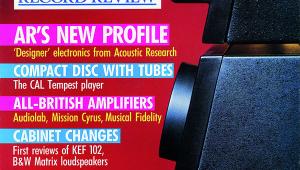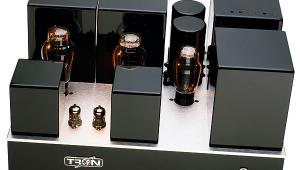Naim NAC 82/NAP 180 Pre/Power Amps Page 2
Control Test
Since the strengths of the Naim electronics are not so great in terms of stereo staging and transparency, these specific advantages of the DP-70V were largely lost in this system, and in terms of musical involvement the Naim player was preferred.
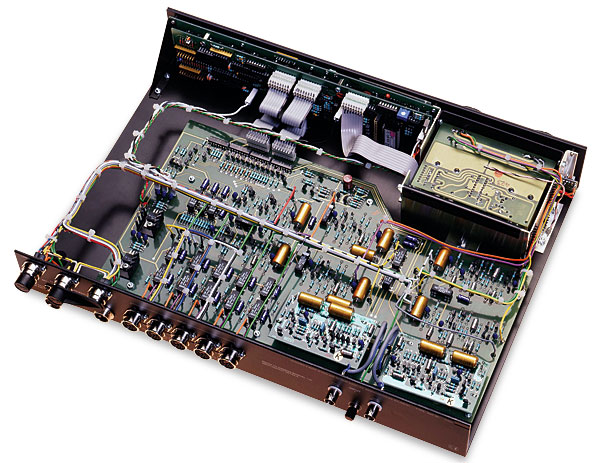
As a control test the Naim speakers were changed for KEF R105 III and Celestion SL700s, the Naim CD player for the DP-70V and the Naim '82/'80 pre/power compared with other reference electronics: a passive controller, Meridian 605, and Krell KST100. The Naim speaker cable was retained to reduce the variables.
The Naim pre/power duo was found to offer a different balance of sound qualities from the mainstream equipment. It could sound a little 'harder' and more 'old fashioned', the midrange a touch 'enclosed', with a 'dry' character and reduced low-level ambience. Certainly, without a Hi-Cap, it rated only 'average plus' to 'good', for recovery of ambience, of low level detail, and the image depth was around 60-70% of what is attainable in this sector.
The bass was mildly constrained, and the intentional bandwidth limit was audible. This left the LF sounding less open and extended than usual. Conversely the bass was tight, quick and tuneful, with a punchy upper region. Heavy bass inputs did not appear to disturb the crisp delivery heard elsewhere in the frequency range – a strong plus point.
Compared with the mainstream examples, there were three aspects which singled out the '82/'80. The first was its ability to read the main strands of a work very clearly, regardless of signal complexity or dynamics. The sound did not clog up when the going got tough.
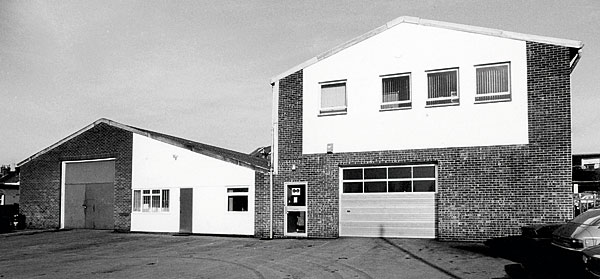
Second, the portrayal of dynamics was outstanding. The designers have clearly valued this aspect highly and have made sure that the electronics can deliver it over a wide frequency range. It helped make the reproduction come alive, a step nearer the master recording.
Third, the particular sound of the artificially 'isolated' '82/'80 largely vanished when it was put back into the Naim system. It then sounded suitably 'open' with very good bass, while the particular characteristics of the back-to-the-wall SBL speakers meant that absolute image depth was less of a consideration. In this context the dynamic and rhythmic strengths of the '82/'80 electronics found great expression and made strong musical sense.
Certainly, the complete Naim system had a 'stagey' sound, and was neither very sweet nor particularly neutral. However, it also sounded alive and involving, thereby generating its own strong appeal.
Higher Ground
Installing a single Hi-Cap freed the NAC 82 from the NAP 180 and a definitive uplift occurred with this addition. It sounded like a new preamp! Inter-transient silences were deeper and darker, dynamics were superior, with still better focus, and significantly increased transparency. Moreover, these changes were very easy to track in the context of this set-up. This is value for money since the system was improved by more than 25% with the Hi-Cap. A second Hi-Cap was now added to the NAC 82. Worth only 30-40% of the lift brought about by the first Hi-Cap, the second did nonetheless deliver as advertised, with a wider, deeper and more focused soundstage, and another extra dose of dynamics. At this point a system which had performed very creditably from the beginning was now really motoring, as if the turbo charger had cut in.
Trials with the Linn LP12 Lingo/ Naim Aro/Koetsu RSII combination showed the phono input to be similarly very dynamic and as rhythmically capable as the line stages, with a good tonal balance. There is very little to add, save to say that the second Hi-Cap power supply showed still greater gain on the phono input. Certainly this augmentation could be considered worthwhile for someone with a valued analogue collection.
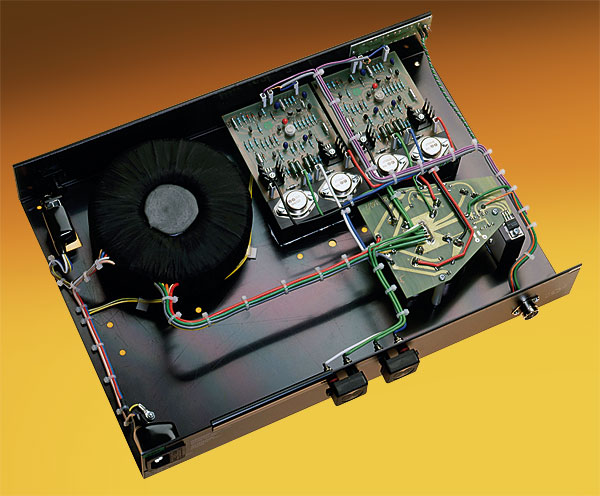
Conclusion
Exposed to review scrutiny, the new NAC 82/NAP 180 combination has been seen to perform very well. While rated at just 60W/channel the power amplifier gave a good account of itself and delivered the kind of slam, dynamics and good timing associated with much larger and more costly units. It played louder than its bare 60W specification suggested and more power than this was not required in practice except in the case of lower sensitivity loudspeakers. The NAC 82 was seen as offering the luxury of a well thought out and effective remote control (although I would prefer the speed of the rotation reduced by 30%), with a good slice of the performance of the flagship NAC 52. Indeed, the NAC 82 is said to rival the first release examples of that latter, older model.
Clear Advance
Its vital quality was the ability to provide good source control and equalisation without significant compromise to the dynamics, timing and musical detail of the sources. Those qualities balanced comfortably its marginally weaker performance on the grounds of coloration, a hint of treble edge and moderate stage depth. The Hi-Cap power supply firmly addressed these latter aspects and, by enhancing the former, it ultimately brought the unit into the audiophile group.
Both the pre and power units may be recommended, separately or more especially in combination. As the Naim system used for the trials had amply demonstrated, their worth is considerably enhanced by optimum system matching. These amplifier components represent a clear advance on their predecessors, and confirm Naim's continuing commitment to an involving musical performance in reproduced audio.








